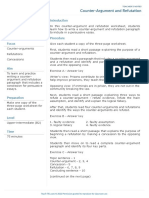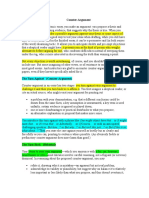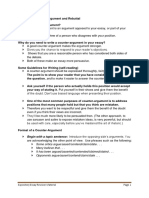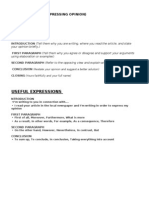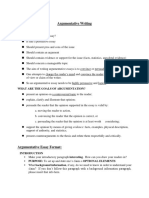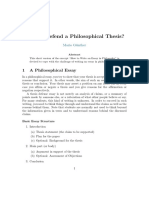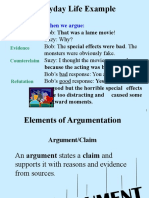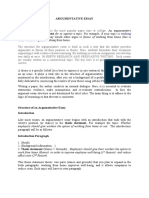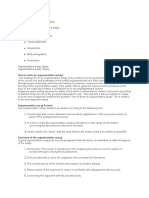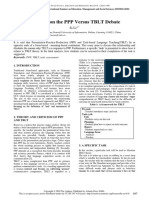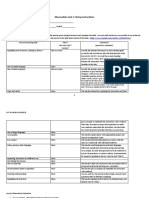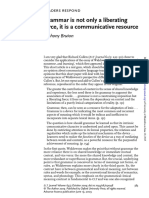0% found this document useful (0 votes)
443 views9 pagesWriting A Refutation Paragraph
The document provides guidance on how to write an effective refutation paragraph. It should be the fifth body paragraph in an essay. A refutation paragraph acknowledges other viewpoints while still supporting the thesis. It introduces the opposing argument, valid parts of the opposition, counters the opposing argument, and concludes by reiterating the thesis. An example refutation paragraph introduces the argument that violent video games desensitize teens, acknowledges some desensitization occurs but argues individual responsibility is more important, and concludes that socioeconomic factors better predict crime than video games.
Uploaded by
NguyenHuongTraCopyright
© © All Rights Reserved
We take content rights seriously. If you suspect this is your content, claim it here.
Available Formats
Download as PDF, TXT or read online on Scribd
0% found this document useful (0 votes)
443 views9 pagesWriting A Refutation Paragraph
The document provides guidance on how to write an effective refutation paragraph. It should be the fifth body paragraph in an essay. A refutation paragraph acknowledges other viewpoints while still supporting the thesis. It introduces the opposing argument, valid parts of the opposition, counters the opposing argument, and concludes by reiterating the thesis. An example refutation paragraph introduces the argument that violent video games desensitize teens, acknowledges some desensitization occurs but argues individual responsibility is more important, and concludes that socioeconomic factors better predict crime than video games.
Uploaded by
NguyenHuongTraCopyright
© © All Rights Reserved
We take content rights seriously. If you suspect this is your content, claim it here.
Available Formats
Download as PDF, TXT or read online on Scribd
/ 9



